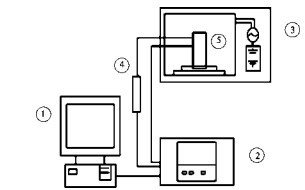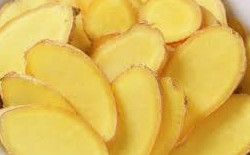Rehydration capacity and physical properties of ginger slices dried by microwave fluidization

ABSTRACT: In view of the effect of microwave drying on the rehydration ability and application quality of dehydrated vegetables, the rehydration characteristics of ginger slices were studied under microwave fluidized drying (MFD) with microwave power of 0.6, 0.9 and 1.2 W/g per unit mass and electrothermal blast drying (AD) at 75 ~C. It was found that the rehydration capacity of microwave drying equipment for ginger slices was weaker than that of hot air drying. With the increase of water bath temperature, the rehydration ability of each group of products increased, and the difference of rehydration ratio narrowed.
The creep properties of the rehydrated ginger slices were measured by dynamic mechanical analyzer (DMA). The hardness of the rehydrated ginger slices obtained by microwave fluidized drying was higher than that of the rehydrated ginger slices, and there was no significant difference among different microwave power. Scanning electron microscopy (SEM) showed that the microwave fluidized drying of ginger slices had a much larger change in microstructure than hot air drying.
Combining with the rehydration and creep process of dried products, it is concluded that the change of the structure of ginger slices will affect the permeation and absorption of water. Rehydration ability is an important index of dehydrated vegetable quality. The improved microwave-electrothermal blast drying can improve the rehydration ability of microwave drying products on the basis of ensuring working efficiency.
Key words: microwave drying of ginger slices; microwave fluidization; rehydration; creep; microstructure

Microwave combined drying can simultaneously use hot air, vacuum, freezing and other auxiliary means to achieve high efficiency and low nutritional loss in the process of drying vegetables and fruits. Andres et al. studied the technology and effect of hot air microwave coupled drying of apple slices. The results showed that microwave power had the most significant effect on combined drying, and there were significant differences in shrinkage characteristics and microstructures among different powers.
Bondaruk et al. studied the quality of potato pellets dried by microwave vacuum drying. It was found that starch and total sugar loss were less than that by hot air drying, and the micro-structure changed in varying degrees. Sharma et al. found that garlic was dried by hot air and microwave coupling. The quality of garlic was higher than that of pure hot air drying, and the drying time was saved by 80%-90%.
In addition, Wang et al. studied the effect of pretreatment on microwave freeze-drying of lettuce. It was found that microwave blanching could reduce the temperature of initial freezing point of lettuce and the ice crystal volume, thus effectively speeding up the microwave drying process. Cao Youfu et al. studied the microwave vacuum freezing device and carried out drying experiments on winter jujube. Compared with ordinary vacuum freezing drying, the drying quality is similar, and it has significant advantages in drying time and energy consumption.
Based on the study of microwave fluidized drying of ginger slices, it was found that the vibration fluidization alleviated the interference of uneven microwave drying and local overheating of raw materials on the quality of products, realized the technology of microwave drying of rhizome vegetables, and abandoned the assistant means of feeding hot air into the equipment and providing vacuum environment. The technology and equipment were simple and the operability was improved.
However, microwave drying alone can affect the rehydration ability of dried vegetables, which is an important indicator of the quality of dehydrated vegetables and some dried products. Wang Qinghai et al found that when the microwave power per unit mass was greater than 0.6 W/g, the tissue structure of tobacco leaves would be damaged to varying degrees. In this paper, based on the previous research on the technology and quality of microwave fluidized drying and staged Microwave-hot air combined drying of ginger slices, the rehydration characteristics of the key indicators of dehydrated ginger slices were studied in depth, in order to provide reference for process optimization and quality analysis.